Cetus is a mythical creature that has been a part of Greek mythology for centuries. It is often described as a sea monster or sea serpent, and has been the subject of many stories and legends. In Greek mythology, Cetus was considered a dangerous creature that embodied the dangers of the sea.
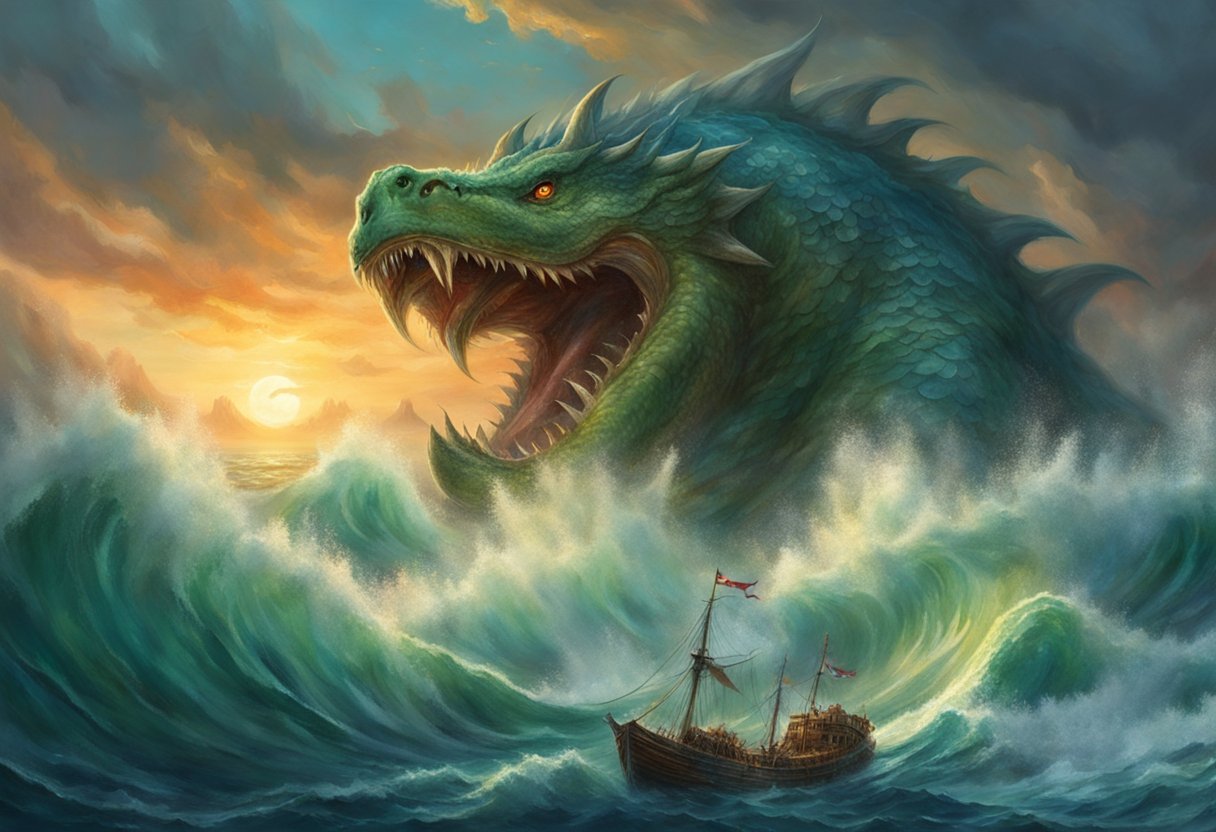
According to legend, Cetus was often depicted as a giant sea serpent with a body that resembled that of a whale or dolphin. It was said to be a fierce creature that could cause great destruction, and was often sent by the gods to punish those who had angered them. Despite its fearsome reputation, Cetus has remained a popular figure in mythology and continues to capture the imagination of people around the world.
Mythological Origins
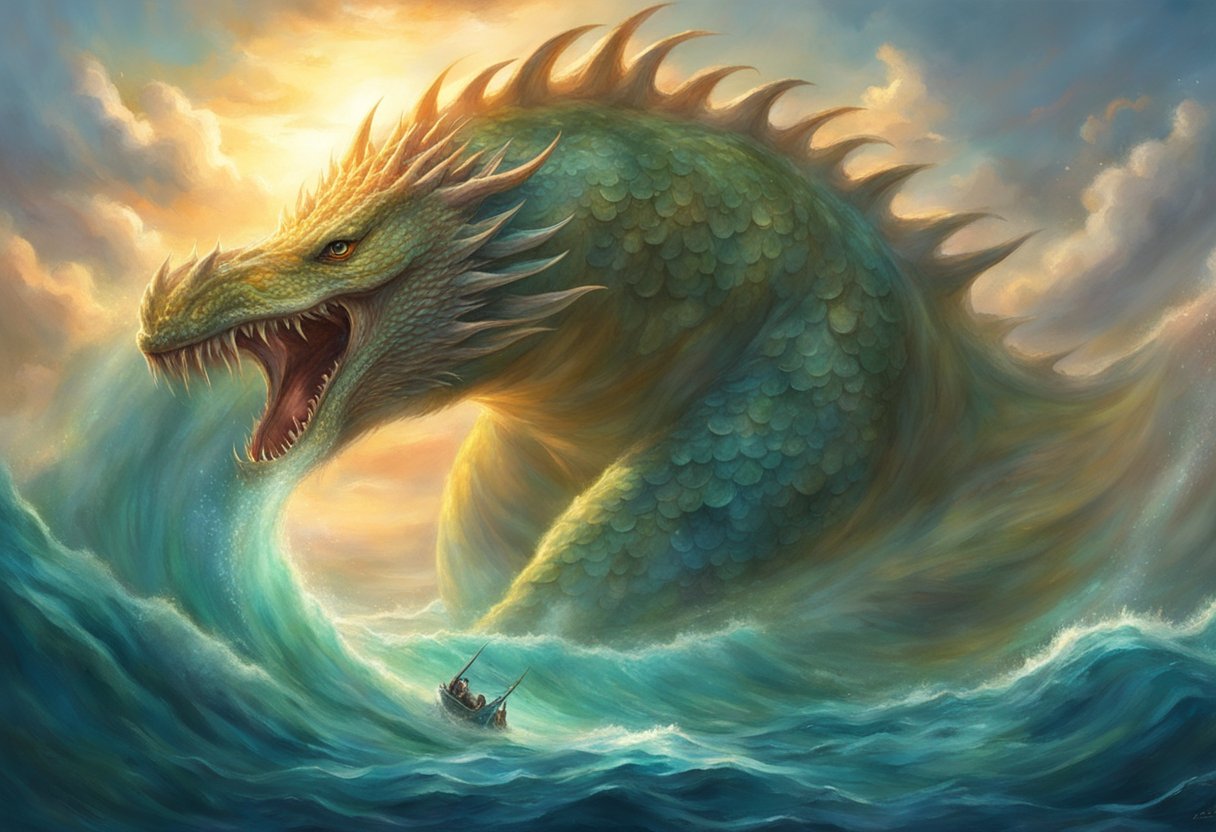
Greek Mythology
Cetus, the sea monster, holds a significant place in Greek mythology as a fearsome creature associated with the sea. According to the mythology, Poseidon, the god of the sea, sent Cetus to wreak havoc and devour Andromeda, the daughter of King Cepheus of Ethiopia. However, the hero Perseus killed the creature and saved Andromeda, thus becoming a legendary figure in Greek mythology.
Near Eastern Influences
The name of the mythological figure Ceto is derived from kētos, which means “sea monster” in Greek. The name of the constellation Cetus also derives from this word. However, the concept of a sea monster is not unique to Greek mythology. Similar creatures can be found in the mythology of many ancient Near Eastern cultures, such as the Babylonians, Sumerians, and Egyptians. These creatures were often depicted as powerful and dangerous, embodying the dangers of the sea and the unknown depths of the ocean.
In summary, Cetus is a mythical sea monster with origins in Greek mythology and influences from other ancient Near Eastern cultures. Its depiction as a powerful and dangerous creature has made it a popular figure in mythology and art throughout history.
Cetus in Astronomy
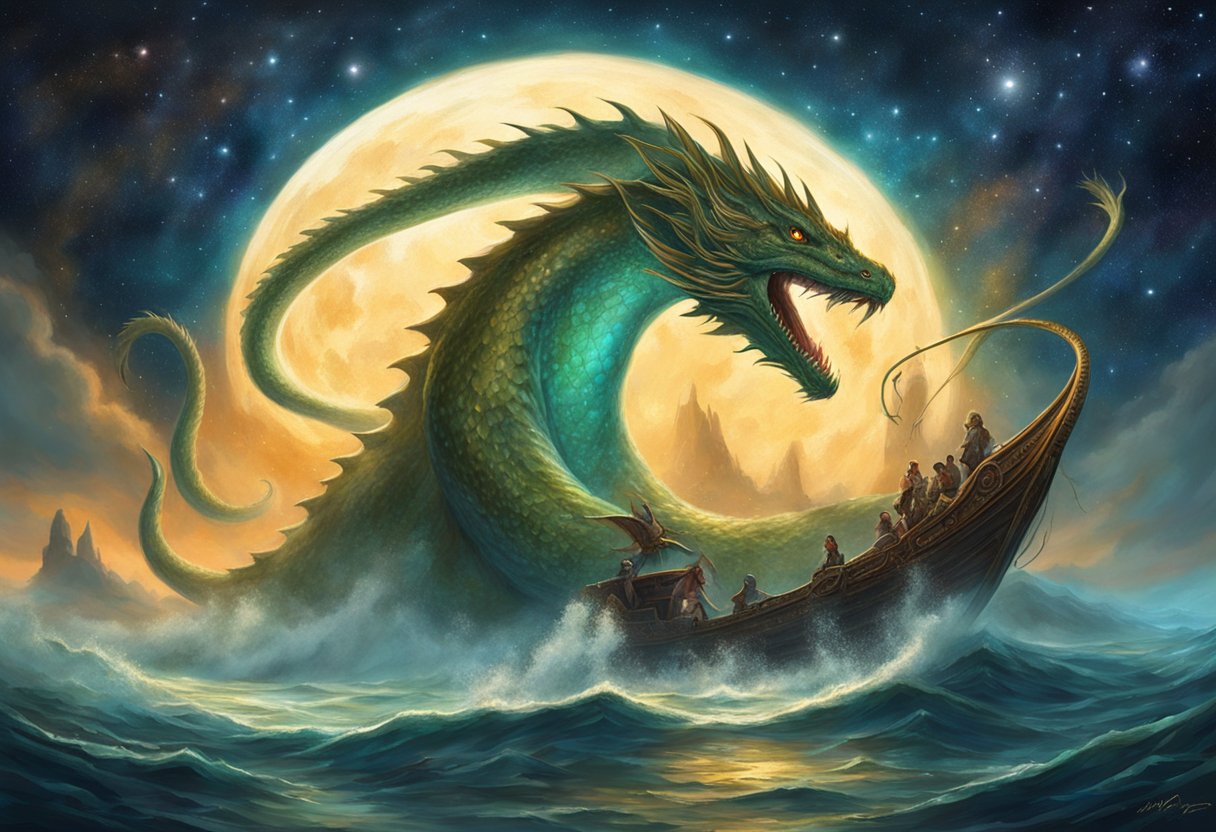
Constellation Facts
Cetus is a constellation located in the southern hemisphere. It was first cataloged by the Greek astronomer Ptolemy in the 2nd century AD. The constellation is named after the sea monster from Greek mythology, which is also known as the whale.
Cetus is a large constellation that spans over 1230 square degrees of the sky. It is the fourth largest constellation and contains many interesting objects, such as galaxies, nebulae, and star clusters. One of the most famous objects in Cetus is the Whale Galaxy, also known as NGC 4631. It is a spiral galaxy located approximately 25 million light-years away from Earth.
Star Composition
Cetus is home to many bright stars, including Menkar, Diphda, and Mira. Menkar, also known as Alpha Ceti, is the brightest star in the constellation. It is a red giant star located approximately 220 light-years away from Earth. Diphda, also known as Beta Ceti, is the second brightest star in the constellation. It is a yellow giant star located approximately 96 light-years away from Earth.
Mira is a variable star located in the constellation Cetus. It is a red giant star that pulsates in size and brightness over a period of 332 days. Mira is one of the most famous variable stars in the sky and has been observed for over 400 years. It is located approximately 420 light-years away from Earth.
In conclusion, Cetus is a fascinating constellation that contains many interesting objects and stars. Its association with the sea monster from Greek mythology adds to its allure and makes it a popular target for stargazers and astronomers alike.
Cultural Significance
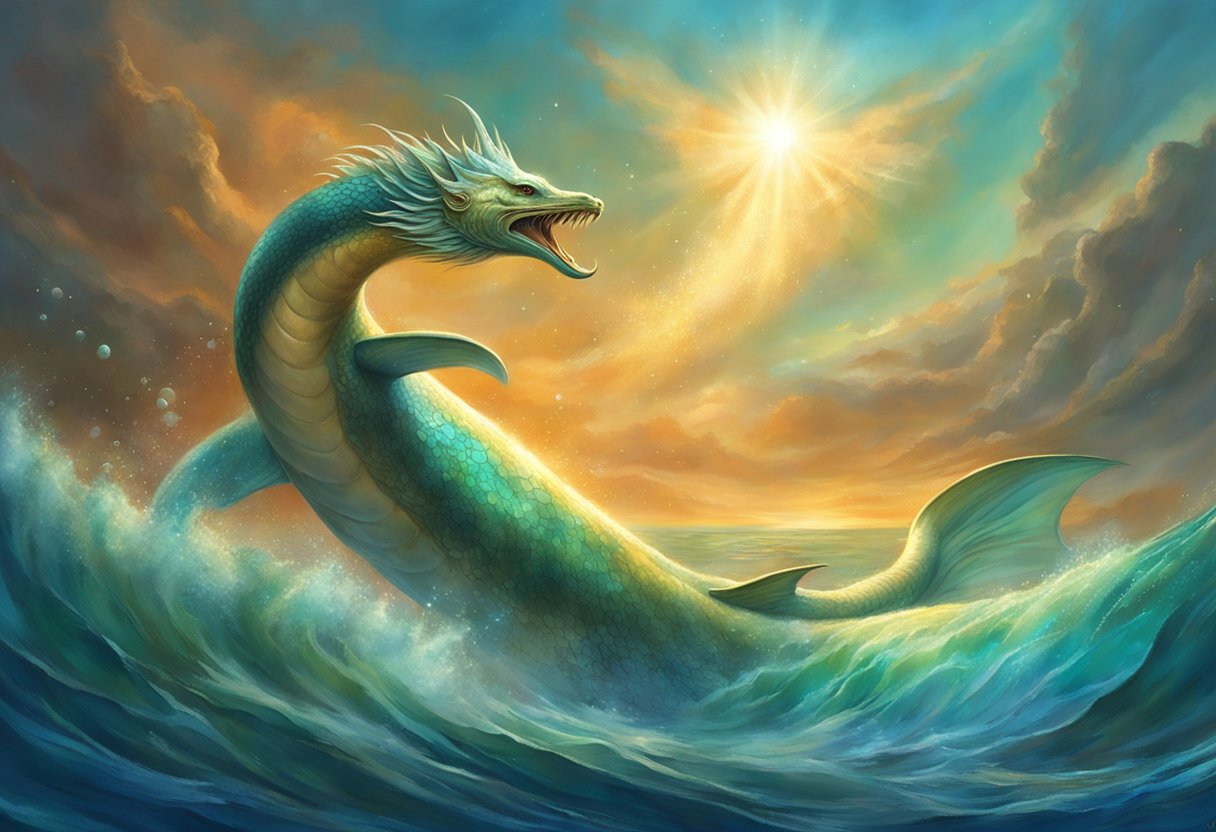
Literary References
Cetus holds a significant place in Greek mythology as a fearsome creature associated with the sea. In the myth of Andromeda, Cetus is sent by Poseidon to wreak havoc and devour Andromeda, the daughter of King Cepheus of Ethiopia. The story narrates how desperately King Cepheus had to sacrifice his own daughter to appease the monster’s wrath. Cetus is also mentioned in the story of Perseus, where he kills the sea monster to save Andromeda.
The Roman poet Ovid also mentions Cetus in his work, “Metamorphoses.” In the poem, Cetus is described as a sea monster with the head of a wild boar and the body of a whale. In another work, “Pharsalia,” the Roman poet Lucan describes Cetus as a creature with the head of a horse and the body of a serpent.
Modern Depictions
Cetus has been depicted in various forms in modern times. In astronomy, Cetus is a constellation that represents the sea monster. In popular culture, Cetus has been portrayed as a sea serpent or a giant whale-like creature in movies, TV shows, and video games. The monster has also been featured in various books and comics.
Cetus has also been used as a symbol in various contexts. In astrology, Cetus is associated with the element of water and is said to represent emotions and intuition. In heraldry, Cetus has been used as a symbol of strength and power. Overall, Cetus remains a significant mythical creature that continues to fascinate people to this day.
Physical Description

Common Attributes
Cetus is a mythical creature that is often described as a sea monster or sea serpent in Greek mythology. It is said to be a large, powerful creature with a long, serpentine body, sharp claws, and a fierce, gaping mouth. According to various versions of the myth, Cetus has the head of a wild boar or greyhounds, and the body of a whale or dolphin with divided, fan-like tails. Some accounts also describe it as having multiple heads or horns.
Artistic Representations
Cetus has been depicted in various forms of art throughout history, including ancient Greek pottery, mosaics, and sculptures. In these depictions, Cetus is often shown as a fierce, monstrous creature with a long, serpentine body, sharp claws, and a gaping mouth. Some artistic representations also show Cetus with multiple heads or horns, while others depict it as a more streamlined creature, resembling a large fish or whale.
In modern times, Cetus has been depicted in various forms of media, including literature, film, and television. In these depictions, Cetus is often portrayed as a terrifying sea monster, capable of wreaking havoc on ships and coastal communities. Some modern interpretations of Cetus also incorporate elements of science fiction, portraying the creature as an extraterrestrial being or a genetically-engineered monster.
Overall, the physical description of Cetus varies depending on the version of the myth and the artistic interpretation. However, it is generally agreed that Cetus is a powerful, fearsome creature that embodies the dangers of the sea.
Legendary Battles
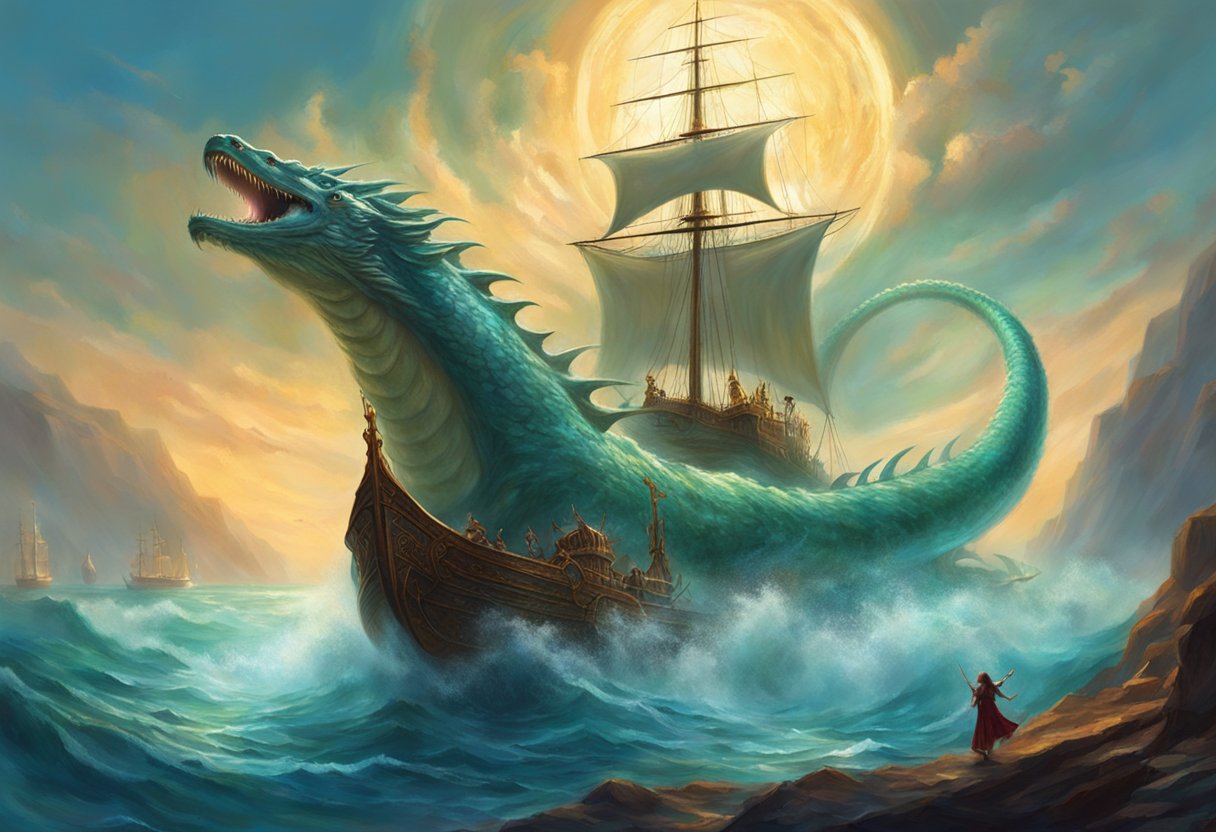
Perseus and Andromeda
One of the most famous battles involving Cetus is the one with Perseus and Andromeda. According to Greek mythology, Cetus was sent by Poseidon to ravage the kingdom of Ethiopia as punishment. To appease the monster, the king and queen were forced to sacrifice their daughter, Andromeda.
Perseus, who was returning from his quest to slay Medusa, came across Andromeda and fell in love with her. He then offered to save her from Cetus in exchange for her hand in marriage. Perseus used Medusa’s head to turn Cetus to stone, thus saving Andromeda and the kingdom of Ethiopia.
Other Heroic Encounters
Cetus was not only encountered by Perseus but also by other heroes in Greek mythology. These include Heracles, who faced Cetus during his quest to obtain the golden apples of the Hesperides. He killed the monster with his arrows.
Another hero who faced Cetus was Triptolemus, who was sent by Demeter to teach agriculture to humanity. During his travels, he came across Cetus and killed the monster with a spear.
Overall, Cetus was a formidable opponent for any hero who dared to face it. Its depiction as a sea monster or serpent in Greek mythology highlights the dangers of the sea and the bravery required to overcome them.
Symbolism and Interpretation
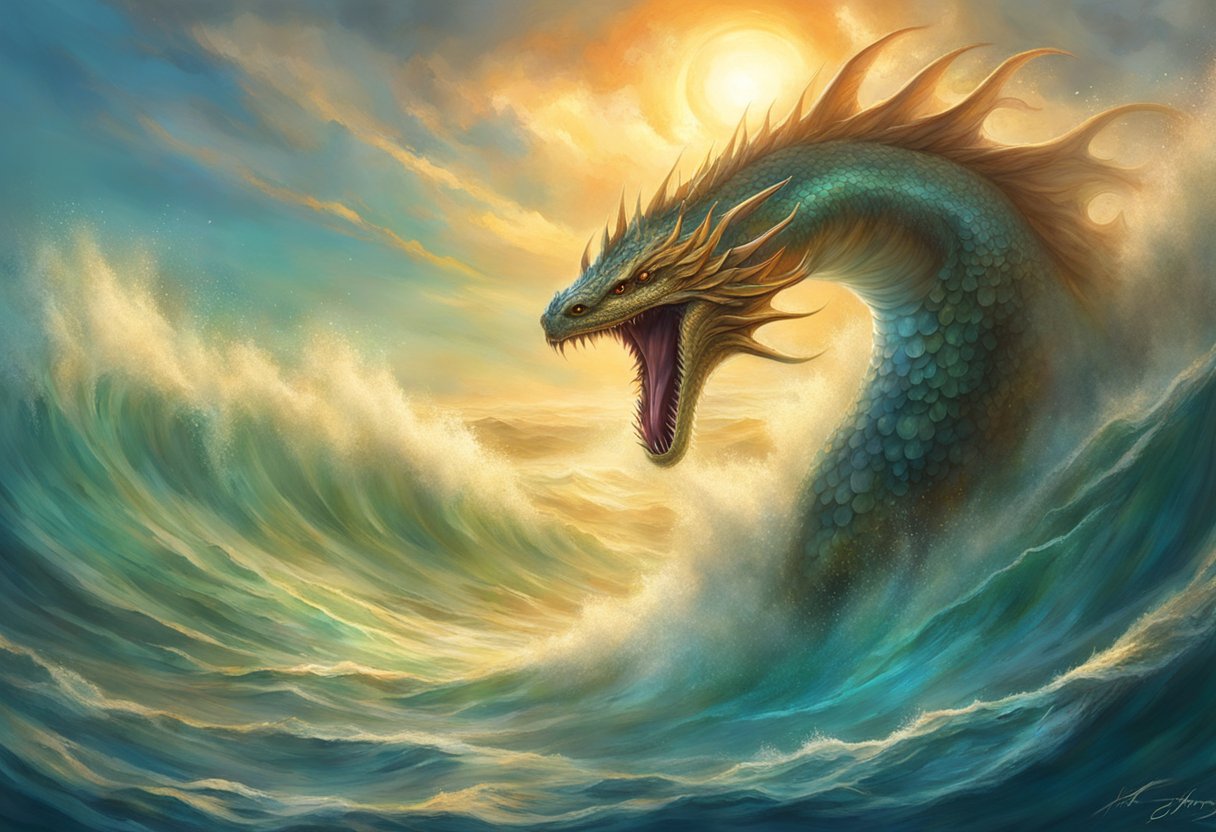
Sea Monster Symbolism
Cetus, the sea monster, is a significant symbol in Greek mythology. It represents the dangers and unpredictability of the sea, which was a vital part of the ancient Greeks’ daily lives. The monster’s depiction as a giant sea serpent with razor-sharp teeth and a fierce temperament embodies the fear and respect that the Greeks had for the ocean.
Allegorical Meanings
Cetus’s symbolism extends beyond the physical realm of the sea. It also represents the dangers of the unknown and the importance of courage in the face of adversity. The story of Perseus and Andromeda, where Perseus slays the sea monster to save the princess, can be interpreted as a metaphor for overcoming one’s fears and taking action to confront challenges.
Cetus can also be seen as a symbol of divine punishment. In the story of Perseus, the sea god Poseidon sends the monster to punish the kingdom of Ethiopia for the queen’s arrogance. This allegory highlights the importance of humility and respect for the gods in ancient Greek culture.
Overall, Cetus’s symbolism and interpretation in Greek mythology are complex and multifaceted, representing both the physical dangers of the sea and the broader themes of courage, humility, and divine punishment.
